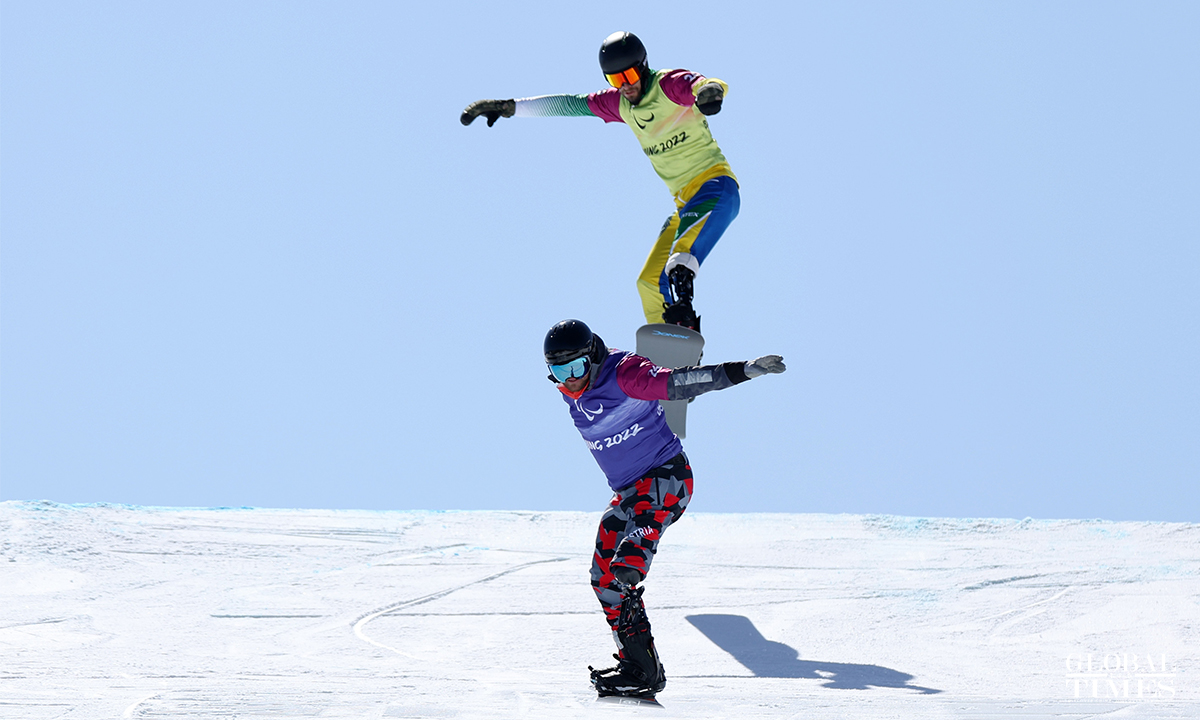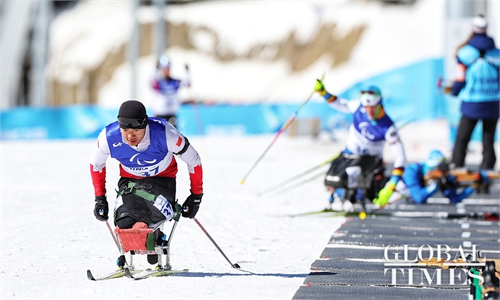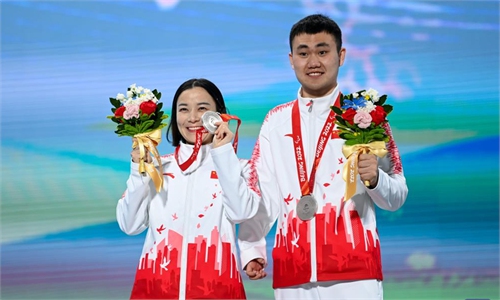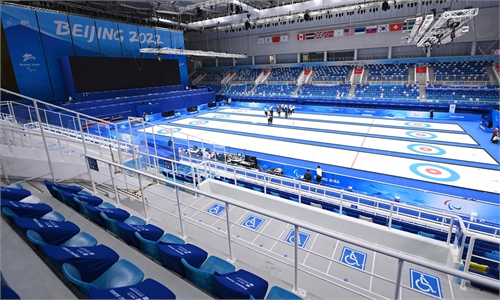SPORT / OLYMPICS
The Winter Paralympics’ youngest event

Photo: Cui Meng/GT
Among all the Winter Paralympics events, para snowboard is the "youngest" as it made its Paralympic debut in 2014.
Snowboarding was first officially introduced with snowboard cross - a snowboard competition with both men's and women's fields that involves four to six competitors in one race - as part of the Alpine skiing discipline at the Sochi 2014 Winter Games.
Para snowboarding athletes participate one of three categories. The SB-LL1 and SB-LL2 stand for lower-limb impaired participants and SB-UL is for athletes with upper-limb impairments.
The sport requires athletes to race down courses at the fastest speed possible. During the event, snowboarders wear boots, helmets, ski goggles and also orthopaedic aids adapted to their needs to ensure safety.
There are eight gold medals up for grabs in the para snowboard events at the Beijing 2022 Winter Paralympics. The Chinese team for this category is also the youngest among the Chinese delegation as the average age of its members is 21.8 years.
As Paralympic snowboarding is a racing event, athletes need to pass through a certain number of flag doors while working to achieve the fastest time across the hilly snow field. The sport requires long-term training and demonstrates the Olympic spirit of self-improvement.



